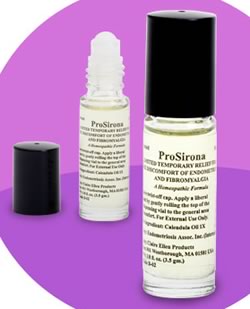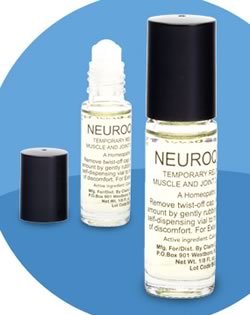Have you tried an OTC pain relief product? They may help!
Topical treatments for pain relief have become quite popular. Sprayed or rubbed onto the skin over painful muscles and joints, they may have a modest effect at reducing pain. There are three basic types:
- Counterirritants use ingredients such as menthol, methylsalicylate, and camphor to create a burning or cooling sensation that distracts the mind from the pain.
- Salicylate creams use the same ingredients as aspirin. These creams are absorbed through the skin where they may help with muscle or joint pain, particularly if the pain is close to the skin, such as the fingers and knees.
- Nerve disruption occurs with the use of capsaicin and calendula oil products. Derived from hot chili peppers, capsaicin acts to deplete a chemical in nerve cells called substance P which is required to send pain signals to the brain. Calendula oil acts to disrupt nerves at the synaptic junction.
Pain relieving creams are considered relatively safe as long as they are used moderately and for shorter periods of time. Side effects are generally mild, including burning, stinging or irritated skin. These products should never be used on wounds or irritated skin. Heat or ice should be avoided UNLESS the product instructions verify that they can be used safely. It’s important to wash your hands well to avoid contact with the eyes, where they can cause severe distress. Patients allergic to aspirin or taking blood thinners should check with their doctors before using salicylate based creams.
Overdosing is possible. In 2007, the New York Times reported that a 17 year old female cross country athlete actually died after accidentally overdosing on methyl salicylate (Ben-Gay).1
ProSirona, Menastil & Neuroquel (OTC)
The Endometriosis Association promotes the use of an all natural product for pain relief to their  membership. A simple topical oil, ProSirona is blend of pure calendula oil, natural essential oils and mineral oil, which has pain relieving properties. Roger Salmonson, CEO of Claire Ellen Topicals, is credited with making the discovery that the marigold plant can help to ease pain. He said “My focus for the past 15 years has been to develop topical medications for both chronic and acute pain relief that do not have the side effects–or costs–associated with many of today’s most popular prescription and over-the-counter pain relievers.”2
membership. A simple topical oil, ProSirona is blend of pure calendula oil, natural essential oils and mineral oil, which has pain relieving properties. Roger Salmonson, CEO of Claire Ellen Topicals, is credited with making the discovery that the marigold plant can help to ease pain. He said “My focus for the past 15 years has been to develop topical medications for both chronic and acute pain relief that do not have the side effects–or costs–associated with many of today’s most popular prescription and over-the-counter pain relievers.”2
The company has three topical oils designed to target pain: Menastil (for menstrual cramps), ProSirona (for fibromyalgia and endometriosis pain) and Neuroquell, their strongest formula. All of Claire Ellen’s topical pain relief products work by inhibiting or interrupting the transmission of painful nerve signals at the nerve synapse.
Salmonson said “We found a safe, reliable way to cause the nerve endings of these cells to separate from one another, and ‘retreat’ towards their own cell bodies. And since all pain-inducing nerve cells function in the same way, it doesn’t matter where the pain is located–since it is working on the nerves in the area applied.”
 Given that ProSirona had been found helpful for endometriosis pain, it wasn’t a stretch to wonder if it might also be helpful for other types of pelvic pain, such as bladder pain. We called the company and learned that they hadn’t done any specific research with IC as yet, so we proposed doing a small, informal survey. The company provided one month supply for ten female volunteers with IC recruited through the ICN Facebook page. No men volunteered.
Given that ProSirona had been found helpful for endometriosis pain, it wasn’t a stretch to wonder if it might also be helpful for other types of pelvic pain, such as bladder pain. We called the company and learned that they hadn’t done any specific research with IC as yet, so we proposed doing a small, informal survey. The company provided one month supply for ten female volunteers with IC recruited through the ICN Facebook page. No men volunteered.
The results were modestly encouraging but clearly a much larger study would be needed to make any strong claims. Six women completed their month long diary and returned their forms. 2/6 reported that their pain improved 50%. 2/6 reported that their pain improved 25%. 2/6 reported no improvement. No side effects were reported by any participant.
One patient wrote “The sensation I felt after applying ProSirona reminded me of the same feeling I have during acupuncture. Also, applying heat helped increase its effectiveness.” Another wrote “It helps with mild flareups but not moderate to severe flareups.” One also reported that it helped tremendously with non-IC pain. One said “I used ProSirona on my knee before surgery and after. It helped about 90% in reducing knee inflammation and pain.” When asked if we should tell other IC patients about it, they all said “Yes!” The cost is $32.99 for a tube that should last approximately three months!
Tiger Balm pain Relieving Patch
 Wendy Cohen RN, author of the Better Bladder Book was the first to introduce the Tiger Balm Pain Relieving Patch to IC patients. She wrote “these inexpensive self-adhesive patches can be a lifesaver. They are small, portable, lightweight and non greasy…They work fairly quickly within twenty minutes or so, to provide relief of pain that can last up to four or five hours.”3
Wendy Cohen RN, author of the Better Bladder Book was the first to introduce the Tiger Balm Pain Relieving Patch to IC patients. She wrote “these inexpensive self-adhesive patches can be a lifesaver. They are small, portable, lightweight and non greasy…They work fairly quickly within twenty minutes or so, to provide relief of pain that can last up to four or five hours.”3
Tiger Balm got its start in the ancient courts of China. In the late 1870’s, Aw Chu Kin, a chinese herbalist working in the Emperor’s court, left China and set up a small medicine shop where he would make a pain relieving ointment. The business was inherited by his two sons who moved it to Singapore and renamed it Tiger Balm. Today, Tiger Balm is sold in more than one hundred countries and has a strong record of success.
How does it work? Available in an ointment or patch, Tiger Balm uses camphor, menthol as a counterirritant. The Tiger Balm patch also includes a stronger pain fighting ingredient, capsicum, an extract of the chili pepper for greater pain relief properties. Wendy said “One of the best uses for these handy patches is to treat the lower-back pain that is referred from the bladder. If you wake up after a tough night of bladder symptoms that include low-back pain, put a patch on and do a little light stretching, and you should feel better quickly.” Patches range from $7.99 to $9.99.
Sombra
Sombra’s Original Warm Therapy Natural Pain Relieving Gel has become one of the leading topical analgesics in the market today. Great for chronic conditions and basic aches and pains, the gel, it contains camphor and menthol as counterirritants, along with capsaicin. Sombra’s Cool Therapy uses menthol and aloe vera for a cool sensation on the skin. Sombra is usually obtained through certified health professionals though it can also be found on Amazon.com. A retail side of the business, known as Sore No More, also sells these products under the Sore No More label. http://www.sombrausa.
com & http://www.sorenomoreusa.com An 8 ounce container of warm therapy is approximately $8 on Amazon.com
Aspercreme, Bengay, Sportscreme
Aspercreme is an example of a salicylate based product which comes in a cream, lotion, roll-on or a heat pain relieving gel. On the market for decades, it’s a tried and true standby for pain related to the joints or muscles yet offers conflicting research results. One study, however, found that salicylates have no effect on muscle pain when used in a cream form.4 However, many athletes disagree and continue to rely on these products. Patients who are allergic to aspirin are discouraged from using these products. These products are available at most drug stores and supermarkets for under $10.00.
Castor Oil Packs
Wendy Cohen also introduced the use of a warm castor oil pack which she suggests using during IC flares. She shared “This was a very effective tool in bringing my pelvic inflammation under control.”5 Castor oil packs are made at home, using cotton or flannel fabric which is moistened with castor oil, wrung out and then placed on the area to be covered. Low heat can be applied to the area and left in place for thirty minutes. Skin should be washed thoroughly afterwards. Wendy cautioned “Occasionally, castor oil pack treatments seem to disagree with IC patients. It may be best initially to try the treatment for a very short time until you know how your bladder will react.” For further information on how this is done, please refer to her book. Castor oil is available at most drug stores and/or supermarkets for approximately $10.00.
References:
1. Muscle-pain reliever is blamed for Staten Island runner’s death. New York Times. June 10, 2007
2. The Plant, The Science & The Scientist. Claire Ellen Topicals Website. Accessed 2/10/14.
3. Cohan W. The Better Bladder Book. Hunter House Publications. 2011. p. 82-83
4. Matthews P, et al. Topical rubefacients for acute and chronic pain in adults. Cochrane Database of Systematic Reviews. Issue 3, 2009.
http://www.cochrane.org/reviews/en/ab007403.html.
5. Cohan W. The Better Bladder Book. Hunter House Publications. 2011. p. 81-82
